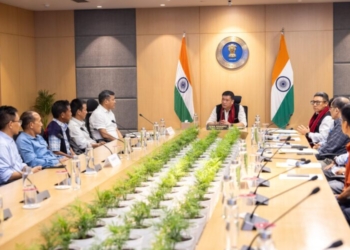Hyderabad: The World Health Organization on Tuesday called for accelerated action to provide quality, affordable, integrated and people-centered comprehensive eye care for everyone to address the increasing burden of vision impairment and blindness in the WHO South-East Asia Region.
“Nearly 30 per cent of the 2.2 billion people living with vision-impaired or blindness globally, are in WHO South-East Asia Region. This huge burden is unacceptable, as nearly half the global vision impairment could have been prevented or are yet to be addressed,” said Regional Director Dr Poonam Khetrapal Singh while inaugurating a high-level meeting of member countries on ‘Integrated People-Centred Eye Care’ here in Hyderabad.
The increased prevalence of vision impairment and blindness in the region among people of all socio-economic group also tracks with the rising tide of non-communicable diseases (NCDs) such as diabetes. In 2019, the region was home to 87.6 million people with diabetes. Of them, 30.6 million had diabetic retinopathy (eye disease caused by high blood sugar), and 9.6 million had sight-threatening retinopathy (blindness caused by untreated diabetic retinopathy).
“The three-day high-level meeting will deliberate on urgent measures to roll out ‘action plan for integrated people-centred eye care in South-East Asia 2022-2030’. The regional action plan details a series of actionable, evidence-based and locally adaptable strategies which need to be implemented with urgency,” Regional Director said.
The regional action plan aims at enabling countries achieve 40 per cent increase in effective coverage of refractive errors, 30 per cent increase in effective coverage of cataract surgery, at least 80 per cent people with diabetes are screened regularly for retinopathy, and at least 80 per cent of those identified with sight-threatening diabetic retinopathy are treated by 2030.
The plan also outlines measures that countries can take to eliminate trachoma in the region by 2025. Two countries in the region – Nepal and Myanmar – have eliminated trachoma.
“People and communities need to be engaged and empowered, with the focus on at-risk and underserved population, to increase health literacy and enhance demand for eye care services,” Dr Khetrapal Singh said.
The Regional Director called for vigorously strengthening eye health workforce and emphasised on financial risk protection to enable people access essential medicines, spectacles, low-vision aids, rehabilitation and assistive products.
(IANS)















